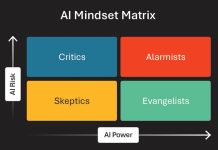It may be discouraging to be concerned about losing an employee at the same time you’re bringing them on board, but that’s the reality of it. The Society for Human Research Management (SHRM) reports that up to 20% of employee turnover happens in the first 45 days. One-third of new hires look for a different job within the first six months.
Clearly, first impressions matter. New employees who go through a structured onboarding program are 58% more likely to be with the organization after three years, according to The Wynhurst Group, a Washington, D.C.-based coaching and consulting firm.
“The problem is that managers’ lives are busier than ever, so it’s simply not that easy to make sure an employee’s first few months at your company are as welcoming, stimulating and productive as possible,” consultant and business book author Keith Ferrazzi stated in an article for Harvard Business Review.
That was in 2015. If anything, managers have become stretched even thinner since then, and onboarding continues to be neglected as the effective retention tool it can be. Ron Carucci, co-founder and managing partner of leadership development and strategy consultancy Navalent, says the most effective companies onboard new hires for the duration of their first full year on the job. Even if a new employee has years of experience, they need to have clarity about what success looks like at their new company.
“New hires with deep areas of expertise can become insecure when they suddenly feel like beginners,” Carucci states in an HBR article on onboarding as a retention tool. Setting up early wins and emphasizing a feeling of community is vital for new sales reps.
“If you want to retain the talent you spend good money to acquire, make sure a new hire’s first year is positive and productive. Those that invest time and effort in their new employees reap the benefits,” Carucci states.
If you thought enough of someone to hire them, it makes sense to invest enough in them to keep them.





